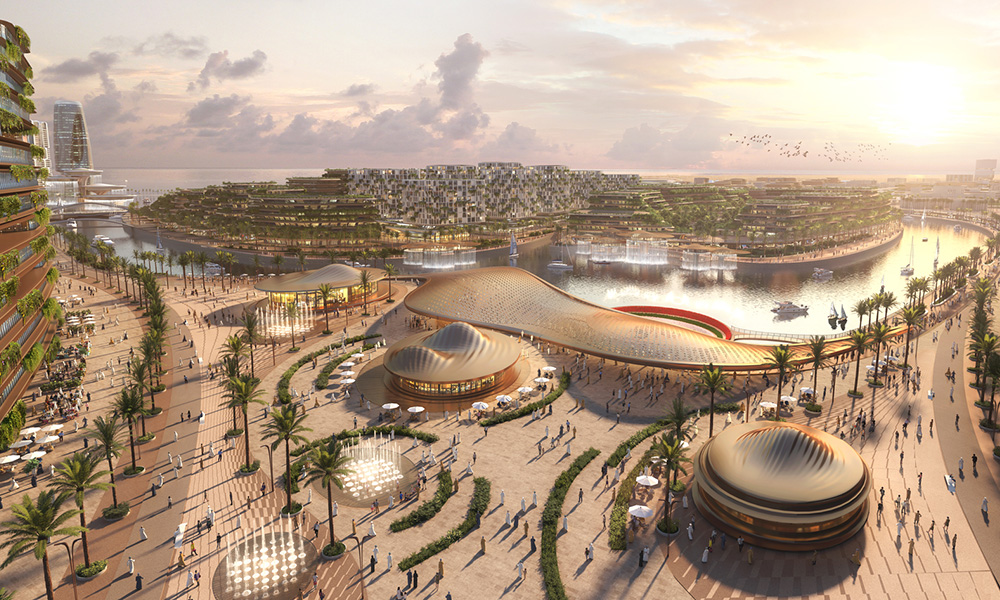Oman’s MoHUP announces new $1.3bn waterfront project
The development will combine traditional cultural features with advanced strategies for sustainable build and procurement

Oman’s Ministry of Housing and Urban Planning (MoHUP) has announced plans for a concept-led waterfront project, Al Khuwair Muscat Downtown and Waterfront Development, to be built in the capital at a total investment of US $1.3bn. Spanning 3.3m sqm, the project has been designed by Zaha Hadid Architects (ZHA).
The sustainability-led design is said to prioritise the well-being of residents and visitors, and will redefine urban living in Oman at a time when Muscat’s population is anticipated to almost double from 1.5m to 2.7m inhabitants by 2040.
The city is also increasingly popular with international visitors, welcoming over three million tourists last year. Responding to this rapid growth, ZHA’s design will transform this existing administrative and industrial area of Muscat into a vibrant new urban district with an expected population of 64,500, said a statement.
The district will comprise five key areas – a marina, a recreational waterfront lined with beaches and sports facilities, a canal walkway, a cultural quarter and a Ministry campus. Continuing Muscat’s rich tradition as a historic port city, the Al Khuwair development is informed by local culture, with the marina acting as the cornerstone of the project, catering to residents, visitors, and tourists.

It will feature a range of attractions while emphasising green spaces and community activity areas along the waterfront, including destination dining experiences, luxury retail outlets, health and wellness facilities, hotels, and residential spaces, said the statement.
ZHA has worked with Buro Happold to implement a materials strategy that factors in the impact of an extreme coastal climate, including mitigating any ‘urban heat island’ effects, stormwater management and breakwaters. The project prioritises material re-use, including recycled construction materials and responsible procurement, and buildings within the Ministry campus will be retrofitted and reused through a programme of refurbishments.
Throughout the compact and walkable development, the use of public transport is encouraged, with good connections to transit services underpinning smart mobility, including light rail transit, bus rapid transit and water taxis. Pedestrian activity is also helped by passive shading, and a cycle infrastructure helps improve on carbon savings by cutting back on private vehicle use, the statement outlined.
Dr. Khalfan Al Shueili, Minister of Housing and Urban Planning remarked, “This visionary project will bring us another step closer to realising the Oman Vision 2040 and delivering a sustainable and prosperous future for the people of Oman. It will help shape the future of both Muscat and Oman more broadly, creating a new destination to welcome visitors from across the globe to our capital city. We trust this project will serve as an exemplar of our ambition to improve human and environmental well-being and our commitment to collaborate with leading international partners during this period of unparalleled development and growth for our nation.”






















